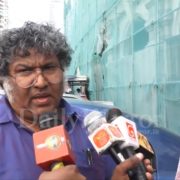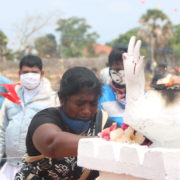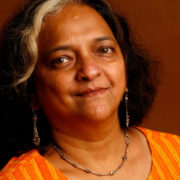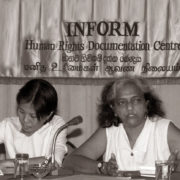DOWNLOAD FULL REPORT: ENGLISH | SINHALA | TAMIL |
Summary:
2014 was a year that saw large scale repression of dissent. Then, on 22nd November, based on a request by the then President Rajapakse, the Elections Commissioner announced that presidential elections would be held on 8th January 2015. A few days before, Rajapakse’s Health Minister, and General Secretary of the Sri Lanka Freedom Party, Mr. Maithripala Sirisena, announced that he will contest the presidential elections as the “Common Opposition Candidate”, representing the National Democratic Front (NDF). From then onwards, many politicians from the ruling United Peoples Freedom Alliance (UPFA) started to defect and pledged support to Sirisena.
The main opposition, the United National Party (UNP), two small but influential parties with the Sinhalese – Buddhist population, the Jathika Hela Urumaya (JHU) and the Democratic Party (DP), also pledged their support to Sirisena. The Janatha Vimukthi Peramuna (JVP), also influential with rural Sinhalese – Buddhists, effectively supported the Sirisena camp without explicitly saying so, with their vocal and consistent critique of the Rajapakse regime. Later, the two main parties representing the minorities, the Sri Lanka Muslim Congress (SLMC) and the Tamil National Alliance (TNA) also pledged support to Sirisena. Lawyers, Academics, Artists, Journalists, NGOs and influential Buddhist and Christian clergy also started to support the Sirisena campaign covertly and overtly. Thus, the Rajapakse camp were left with state media, state resources, military, police and other state institutions to back up their campaign. This report doesn’t cover the widespread use and abuse of state resources by the Rajapakse camp, but focuses on the repression of opposition political politicians, their supporters, and academics, artists, human rights activists, journalists which began from the time elections were announced.
The main opposition candidate and his two most high profile supporters, the opposition leader and former president were themselves attacked. At least two persons were killed in election related violence and many were injured. Many also got death threats. There were also number of attacks on party officers, houses, business establishments and vehicles belonging to opposition politicians and their supporters. Polling Agents and Election monitors were also attacked and threatened. Senior journalists were subjected to interrogation and death threats.
Artists and human rights defenders who were supporting the Common Opposition candidate were also attacked and threatened. The vast majority of victims of election violence till the election day were supporters of the Common Opposition candidate. Electoral violence pattern changed dramatically after the victory of the Common Opposition candidate. The days after the elections saw high profile supporters of the losing candidate, former President Rajapakse, complaining of death threats, intimidations and of witch hunt alleging violence, corruption and other malpractices.
These included the President’s son, himself a Member of Parliament. Supporters of President Rajapakse and their properties were attacked. Within weeks, lawyers and civil society led agitations finally led to restoration in office of the 43rd Chief Justice, who was impeached unconstitutionally under the Rajapakse regime. Isolated incidents of hounding Tamil activists were reported in the North after elections. But overall, towards latter part of January, reports of incidents of repression of dissent reduced dramatically compared to 2014.





Comments